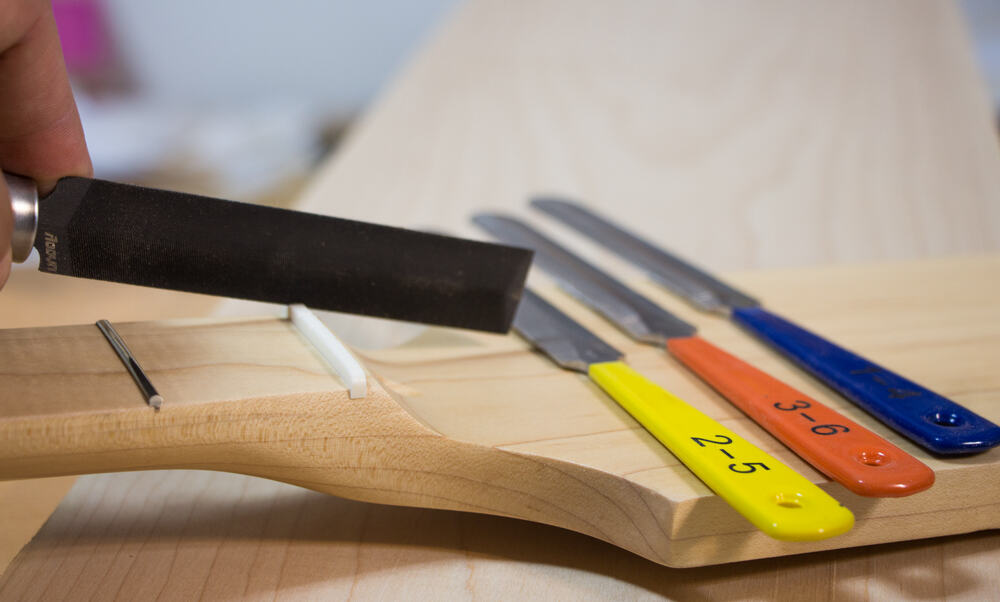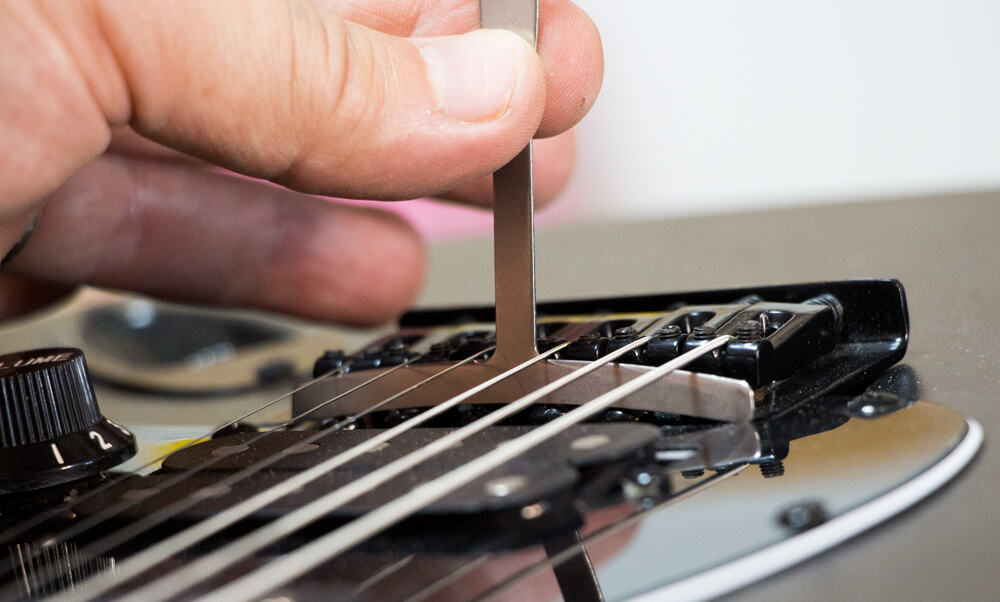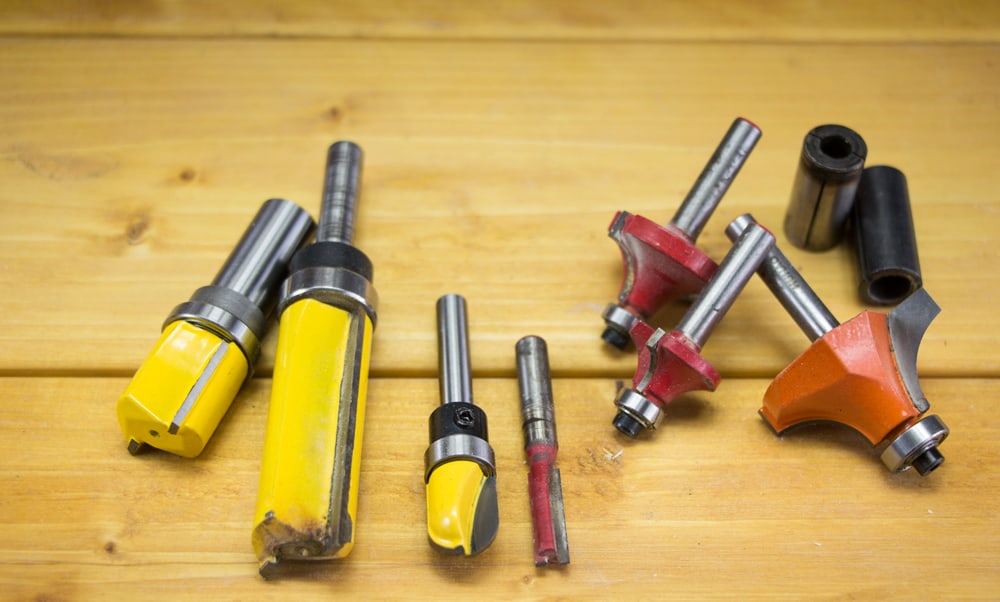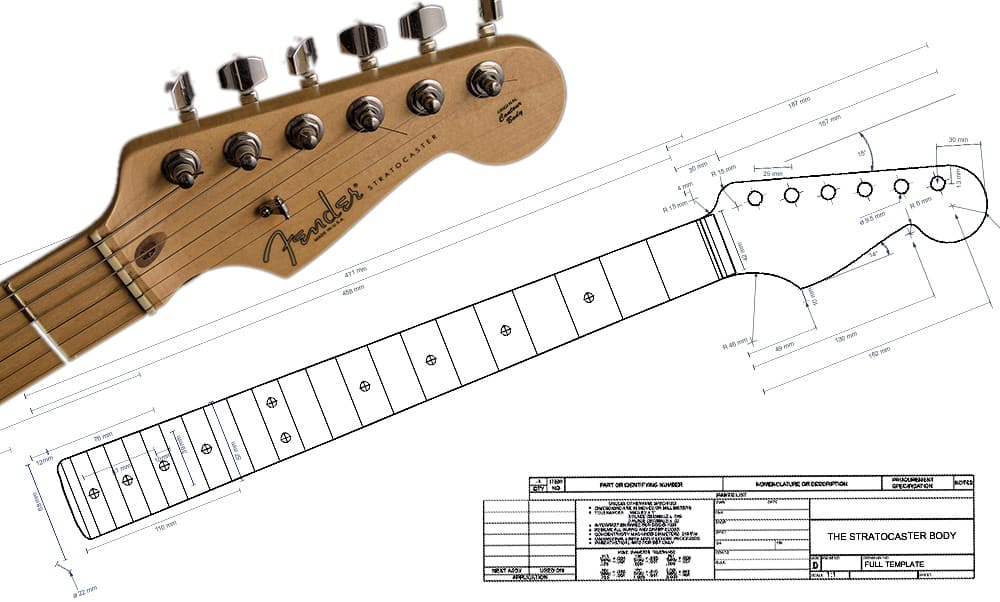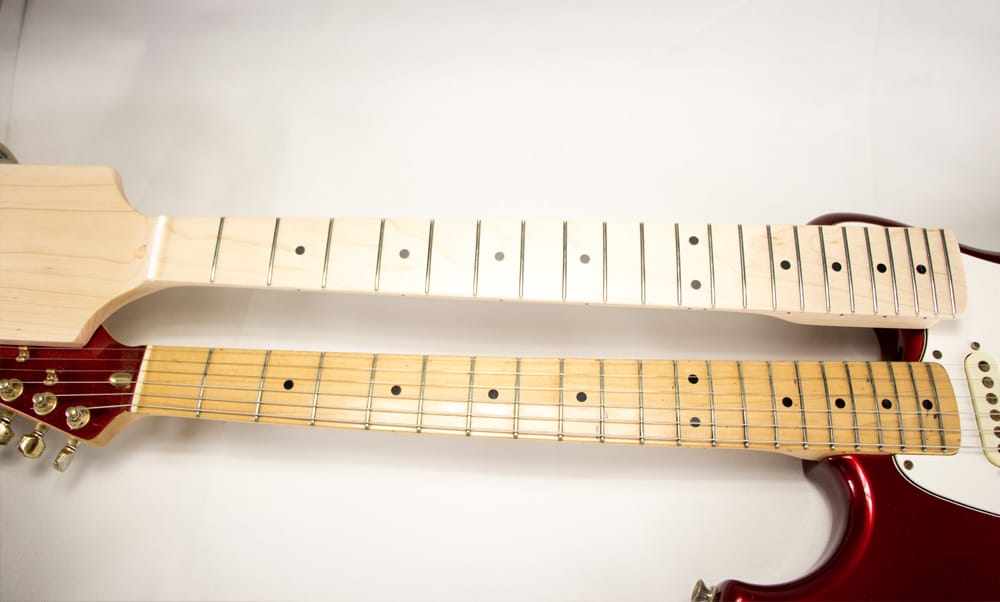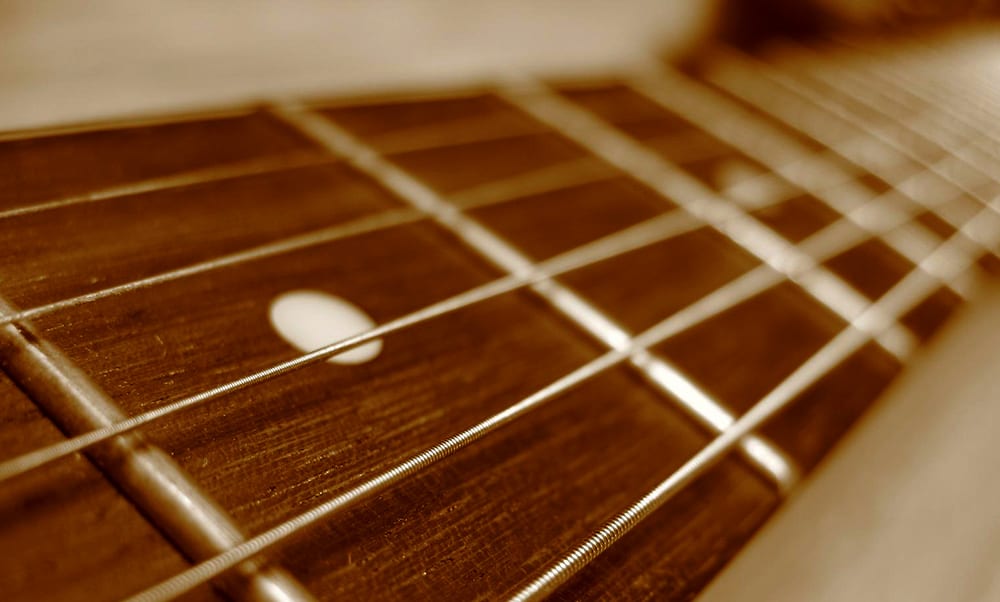The basic idea when slotting your nut is file the slots as low as possible (or to the players personal preference) without going too low and creating any buzz. You also want to consider filing the correct width of each slot, the angle and the spacing between slots. Other factors to consider are the tools at your disposal and the type and material of the nut itself.
Guitar DIY – How to use radius gauges
There a couple of main uses for the Radius Gauges
The first one is for checking the and adjusting the radius of the fretboard during the guitar construction, where we hold the Radius Gauge against the fretboard and look for spaces or bumps in order to eventually match the desired radius. The second time we us the Radius Gauge is when setting up the guitar with the string on it. At this point we are actually holding the Gauge against the strings themselves to see that they are matching the radius of the fretboard both in the nut area and the bridge.
Useful Router Bits for Guitar Building and How to Use Them
What are the most useful router bits when building a guitar?
The most useful Router Bits for any guitar style are:
• Flush trim bit, AKA Template Copier.
Depending on the style of guitar you will also want:
• Chamfer or Round-over Bits,
• Straight Carbide Tip
• Rabbet Bit with multiple bearings
How to build a Stratocaster Style Neck
How do you build a Stratocaster Style Neck?
• Decide on specs and create a Template
• Decide on types of wood/s and cutting to rough size
• Routing and installing the Truss Rod
• Cutting and routing the basic shape of the neck and headstock
• Shaping the neck back, drilling the headstock and thinning it
• Cut the slot the fretboard, drill for the inlay and glue in the dots
• Radius the fretboard, glue it to the neck, cut and shape it to the neck width
• Install the frets and dress them
• Lacquer, oil, buffing and installing the machine heads.
Things to Know About Guitar Neck Replacement
What are the things you need to know about guitar neck replacement?
1. It may involve measurement and even some woodwork.
2. Always be patient to avoid critical errors.
3. Replacement neck specifications should match the original as close as possible.
4. Scale length and fret count are crucial when ordering a replacement.
5. Replacement may get a little complicated, but with the proper precautions it is achievable.
6. Ensure the replacement neck’s profile is to your taste.
Cleaning a Rosewood Fretboard – Without Damaging It
Cleaning a rosewood fretboard without damaging it can be done using wood oil soap, steel wool, lemon oil, and a towel. To properly clean it, you will need to unstring the guitar, protect the sensitive areas, remove the dirt, condition and polish, and restring the guitar.

